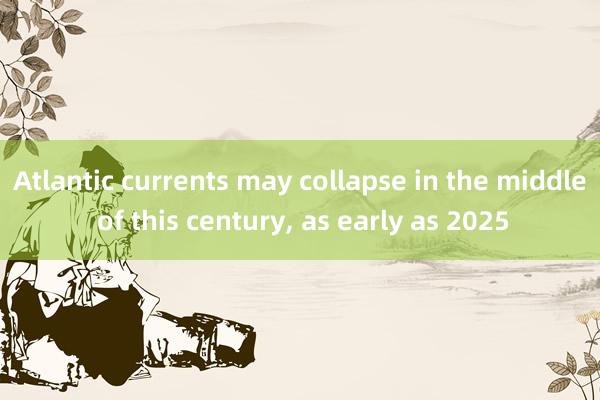Atlantic currents may collapse in the middle of this century, as early as 2025
发布日期:2025-03-16 13:10 点击次数:85


Contrary to the impact of climate change on Europe as people imagined, a colder future may be coming. Image source: Henrik Egede-Lassen
If current greenhouse gas emissions continue, important currents that redistribute heat, cold and precipitation at the northernmost ends of the tropical and Atlantic regions will cease around 2060. This is based on new calculations by Danish scientists, contradicting the latest report from the United Nations Intergovernmental Panel on Climate Change (IPCC).
Contrary to the impact of climate change on Europe as people imagined, a colder future may be coming. In a new study released on July 25 by Nature Communications, researchers from the Niels Institute of Bohr Institute and the Department of Mathematical Sciences predict that if people continue to emit the same levels of greenhouse gas as they do today, the current system that currently distributes hot and cold between the North Atlantic and tropical regions will be completely stopped.
Using advanced statistical tools and ocean temperature data over the past 150 years, the researchers calculated that ocean currents called thermal salt circulation or Atlantic meridional flip circulation (AMOC) will collapse between 2025 and 2095, with a 95% chance of this conclusion. And this is likely to happen 34 years later in 2057 and may face major challenges, especially warming in the tropical region and increasing storms in the North Atlantic region.
“A cessation of AMOC may have a very serious impact on the earth's climate, such as changing the distribution of global heat and precipitation. While cooling in Europe may appear less severe as global warming and heat waves increase in frequency, this collapse will lead to intensifying warming in tropical regions, adversely affecting climate change. ”Nils· said Peter Ditlevsen, a professor at the Bohr Institute.
“Our research results emphasize the importance of reducing global greenhouse gas emissions as soon as possible. ” the researchers said.
However, these calculation results are inconsistent with the information in the latest IPCC report. The IPCC report is based on climate model simulations and believes that mutations in hot salt circulation this century are unlikely.
The researchers' predictions are based on observations of early warning signals displayed when ocean currents become unstable. These early warning signals for hot salt circulation have been reported before, but until now, the development of advanced statistical methods has made it possible to predict when a collapse occurs.
Researchers analyzed sea surface temperatures in specific areas of the North Atlantic from 1870 to the present. These sea surface temperatures are “ fingerprint ” these “ fingerprint ” were not directly measured in the past 15 years.
Susanne Ditlevsen, a professor in the Department of Mathematical Sciences at the University of Copenhagen, explained: "We used new and improved statistical tools to perform calculations to make a more reliable estimate of the time when the hot salt circulation is most likely to collapse, which we could not have done before. ”
The hot salt circulation has been operating in its current mode since the last Ice Age, but the circulation has indeed collapsed before. It was observed that under the ice age climate conditions, climate mutations between the normal state of AMOC and the collapsed state occurred 25 times, which was the first famous Dansgard-Ushig event observed in the ice core of the Greenland ice sheet. Among these events, climate change is extreme, changing 10 to 15 degrees Celsius in 10 years, while climate change now warms 1.5 degrees Celsius in a century. (Original title "The Atlantic Currents May Collapse in the Middle of this century
The earliest occurrence in 2025")
Related Paper Information:
https://doi.org/10.1038/s41467-023-39810-w